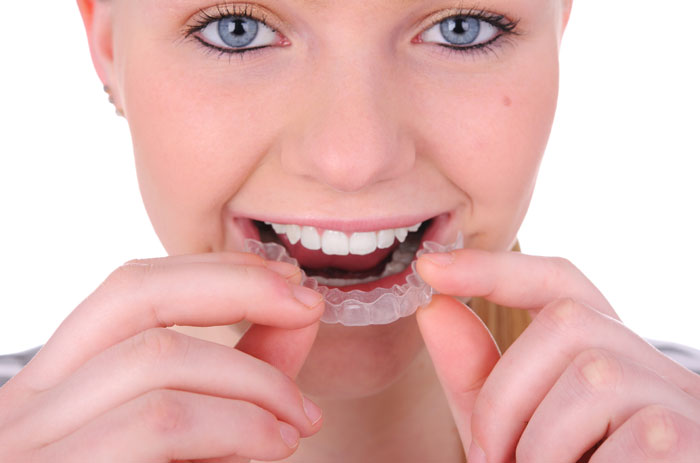From Crooked to Confident: How Invisalign Creates Perfect Smiles

Not only do teeth that are crooked or out of place look bad, but they can also be bad for your oral health. If you have crowding, gaps, or problems with your bite, it can be hard to clean your mouth every day. This can lead to plaque buildup, swollen gums, and eventually periodontitis.
Misalignment can also make it hard to chew correctly, put too much stress on the jaw joints, and wear down or break enamel. A lot of people, on the other hand, are embarrassed about their smiles, which makes them less confident and less at ease around other people. People can now get straighter teeth more easily thanks to clear aligner systems like Invisalign. Now, they can do it easily, privately, and accurately.
Why Don’t Teeth Line Up?
Your teeth can move around because of both your genes and your environment. For instance, you might have crowding or spacing if your jaw and teeth are different sizes. Children may suck their thumbs or stick their tongues out, which can move their teeth. Some people lose their baby teeth too soon and don't get new ones in time. This can change the way their adult teeth come in.
Not only do these conditions need orthodontic correction for looks, but they also need it to keep your mouth healthy. Plaque and tartar can build up on teeth that are overlapping or tilted because they are harder to clean. This raises the risk of gingivitis and periodontitis, and it can also cause chips or uneven wear. When the teeth are properly aligned, the forces of biting are spread out, which protects the enamel and jaw joints.
A Different Way to Straighten Your Teeth
Braces made of metal that are still used work well, especially for cases that are hard or skeletal. But they do have some problems: the brackets and wires are easy to see, hurt, and make it harder to keep clean. Patients also have to deal with having to go to a lot of appointments to make changes and not being able to eat certain foods.
A lot of people are using **clear aligners** like Invisalign to fix mild to moderate misalignment. These trays fit your mouth perfectly and are hard to see. Over time, they move your teeth slowly. The focus of the practice is on the aesthetic and practical benefits: patients can take off their aligners to eat, brush, and floss, which helps them keep their mouths clean and comfortable while they are getting treatment. Digital planning tools also let patients and doctors see what the expected outcome will be before treatment starts.
How Clear Aligners Work
The first thing that happens in clear aligner therapy is that a detailed digital scan of the patient's teeth is taken. These scans make a 3D model that helps the dentist plan each step of the movement very carefully. Using this model, a set of custom trays is made out of thermoplastic that doesn't have BPA in it. People know this kind of plastic is strong and clear.
You wear each tray for about two weeks, and they move your teeth a little bit at a time. The aligners put a little pressure on some teeth, which moves them into the best position over time. Most of the time, patients wear the aligners for 20 to 22 hours a day, only taking them off to eat and take care of themselves. Regular check-ins make sure that progress is being made and that changes are made when they are needed. A retainer is used to keep the new alignment after treatment is over.
Why People Pick Invisalign
Here are some reasons why clear aligners are now the most popular choice:
- Discreet looks: In social and professional settings, the clear material makes them almost invisible.
- Comfort – Aligners don't have any metal brackets or wires, so they don't hurt soft tissue or put pressure on points.
- Better hygiene – Patients can keep brushing and flossing well while they are getting treatment because they can take off the braces.
- Fewer trips to the office – With digital planning, you don't have to make as many changes by hand.
- Predictable results – Advanced software shows how each tooth moves, which helps patients understand how their treatment will go.
Straighter teeth are not only more attractive, but they are also easier to clean, work better, and are better for your long-term oral health.
Before You Get Started, Here Are Some Things You Should Know
Clear aligners don't work for every case. Here are a few important things to keep in mind:
- How bad the misalignment is—If the orthodontic problem is more complicated, you might need both aligners and traditional braces.
- Patient compliance – You must wear the aligners for 20 to 22 hours every day. If you don't use it often, it could slow down your progress or make things worse.
- Post-treatment retention – Retainers are important to keep the results and stop a relapse.
- You need to fix any gum disease or other periodontal problems before you can start aligner therapy.
The office carefully checks each patient to make sure they are a good fit. This helps make sure that the best results and long-term stability happen.
Staying With The Results
Finishing active treatment is only one step along the way. It's important to wear a retainer, which is usually at night, to keep your teeth in their new places. If this step isn't done, the teeth might slowly move back, which would ruin the results.
To protect their gums, patients should also brush their teeth with fluoride toothpaste, especially stannous fluoride toothpaste. They should also go to the dentist on a regular basis to make sure their teeth and gums are healthy. To keep the benefits of alignment, you need to take care of the structures that support it.
In Short
With Invisalign, you can get the straight smile you've always wanted without brackets, wires, or changes to your daily life. The aligners are almost invisible, easy to care for, and made to fit perfectly with digital technology.
For mild to moderate alignment problems, they offer a clinically proven solution that helps both the look of your teeth and your oral health.
Three things are very important for Invisalign to work: expert planning, patient compliance, and long-term care. These aligners are one of the best and most comfortable ways to get long-lasting results today, as long as you work with an experienced provider and follow their advice.
Do you want to know how to get a healthier, straighter smile? Call (407) 777-2071 to make an appointment.
